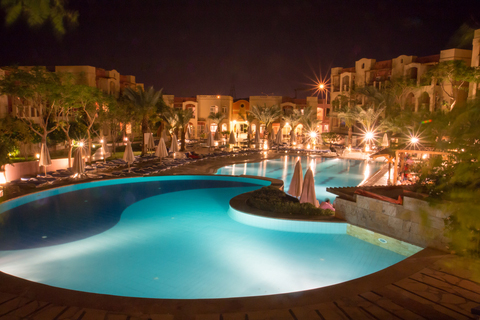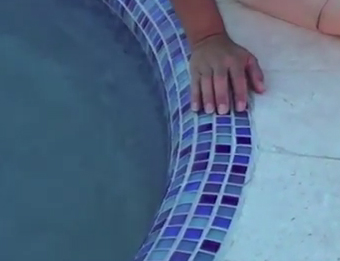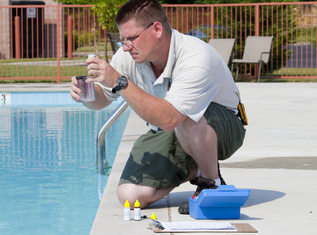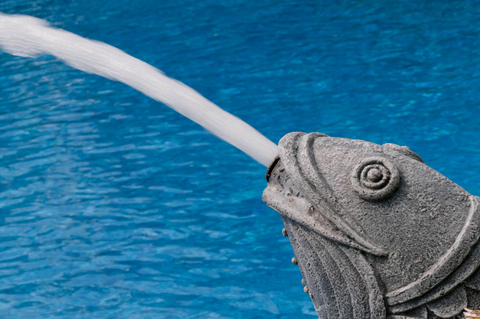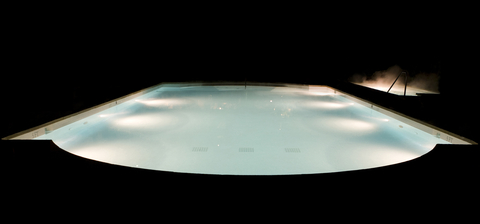Pools & Spas
In my work as a construction-defect expert witness, I see a certain problem in the design and construction of spillways all too frequently: When the system is initiated, the flow of water down the face of the dam wall will behave more or less as desired, holding to a narrow path into the pool or trough that awaits it. After a time, however, that water will begin to migrate, spreading out farther and farther beyond the desired pathway until the material - usually some sort of
It's a fact: Those who own and operate commercial aquatic facilities spend a lot of time trying to find ways to keep costs under control. From elaborate hotel pools to huge waterparks, it's all about finding money to reinvest in new programs and features - or a simple matter of keeping the doors open. In a recent article, I wrote about how the increasing use of
In decades past, comfort wasn't typically uppermost in mind when spas were being designed and built in conjunction with swimming pools. Jet placements could be arbitrary, walls were almost always set at 90-degree angles to the seats and, perhaps least thoughtful of all, coping was set up pool-style, with grab edges that hit anyone tall enough to get on an amusement-park thrill ride somewhere in the back, shoulders or neck, making it difficult to relax and enjoy the experience. These days, fortunately,
In my work as a construction-defect expert witness, I've seen how damaging salty water can be to hardscape materials around pools and spas equipped with saltwater chlorination systems. It's so common that, personally, I now try to avoid using those devices on the watershapes I design and build. It's not that I think saltwater chlorination is intrinsically evil; instead, it's the fact I've seen so many different things go wrong with watershapes that have these systems that I decided some time ago that they weren't for me. It's often said that
These days, we do most of our work in the hills in and around Newport Beach, Calif. To describe the area as "affluent" is understating the case: For years now, even modest homes for sale in the area usually draw seven-figure prices - and the more modest the home, the likelier it is that it will be torn down and replaced with something larger and more elaborate. Through the past few years, we at Pure Water Pools of Costa Mesa, Calif., have been called to many of these built-out properties by homeowners who
Decades ago, people in the pool industry started becoming aware that there was more to pool maintenance than just adding sanitizers to the water (to kill algae and bacteria) and filtering it (to help keep it crystal clear). Gradually, we learned that even properly sanitized and filtered pool water could become unbalanced. Further, we figured out that unbalanced water could be either scale-forming, in which case a layer of
It happens more often than it should: Even in times when trade shows and educational enterprises such as Genesis 3 all stress the importance of knowing the basic forces at work within and around pool shells, I am all too often called in to investigate cases in which a builder has made a large and careless mistake that can have disastrous consequences. The point these contractors are overlooking is that the bond beams of many (if not most) pool shells are engineered in such a way that
Through the years, professional watershapers have learned that good hydraulic design can significantly increase system efficiency while lowering the ongoing costs of operation. Now they're also recognizing that achieving these efficiencies and finding these savings are perceived as "going green" - a key to helping
If you've been a contractor for any length of time, it's likely that you've installed more 500-watt incandescent lamps (and the niches, rings and glass lenses that enclose them) than you can easily count. These fixtures aren't installed as commonly as they once were, but there are
Even after all these years, in which countless seminars and classes have covered proper techniques for designing, engineering and building vanishing-edge pools, I am still all-too-frequently confronted in my role as a construction-defects expert witness by installations that are just plain wrong in one way or another. The biggest problems usually have to do with the











